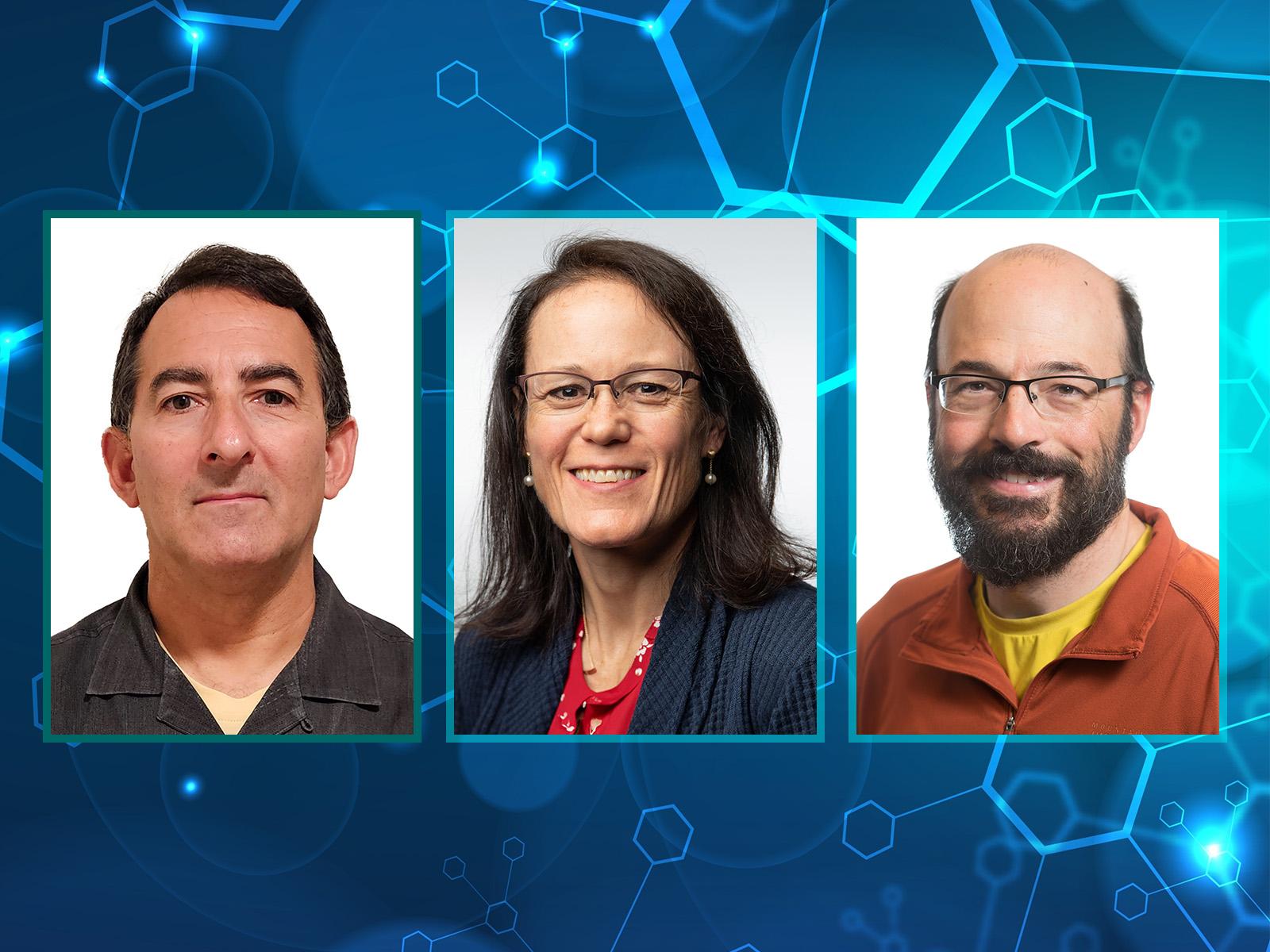New Report Highlights Key Technologies that Can Identify Source of Chemical Weapons
Research challenges and policy options evaluated

Photo collage by Shannon Colson | Pacific Northwest National Laboratory
Chemical weapons have caused more than one million casualties globally since World War I, according to the United Nations.
As a result, the Chemical Weapons Convention (CWC) was a historic development in multilateral disarmament agreements. It led to the complete elimination of declared chemical weapons stockpiles in more than 190 participating states, including the United States. The CWC entered into force in 1997, signifying legal implications for violators.
Yet, chemical weapons are still being used, specifically since 2012, with an increase that has not been seen in decades.
In September 2023, the U.S. Government Accountability Office (GAO) published “Chemical Weapons: Status of Forensic Technologies and Challenges to Source Attribution,” which assesses the best technologies available to identify chemical agents, summarizes the challenges researchers face, and discusses potential policy options that can mitigate these challenges.
Global community of experts
In 2021, GAO brought together nearly two dozen international experts in chemical weapon forensics and analysis, who served as key contributors to the report. John Cort, a chemist; Jonathan Forman, a science and technology advisor; and Kabrena Rodda, manager of the Analytical Chemistry and Instrumentation Group represented Pacific Northwest National Laboratory (PNNL).
The PNNL trio was joined by members of the U.S. State Department-led Chemical Forensics International Technical Working Group (CFITWG) and leaders representing government, academia, the private sector, and other Department of Energy national laboratories.
“The report provides valuable recommendations developed by GAO with inputs from a host of world-renowned threat agent, analytical chemistry, and policy experts that identify tools and methodologies, which could be prioritized and validated for enhancing forensic capabilities applied to chemical attacks,” said Forman.
“These measures would contribute to increasing the difficulty to escape accountability for those carrying out chemical attacks. The report and its recommendations are timely. The OPCW recently announced the formation of a working group, led by its Scientific Advisory Board, that will focus on chemical forensics.”
Mature and nascent forensic technologies
CWC States Parties can call for international investigations of the alleged use of chemical weapons through the Organisation for Prohibition of Chemical Weapons (OPCW). When an allegation is made, the OPCW sends investigators to collect information and environmental and biomedical samples for chemical analysis. These samples are sent to a network of designated laboratories that use established analytical technologies to identify the chemical(s) present in the sample. The results are used to corroborate or refute the allegations.
GAO found that most technologies useful for this work are established, commercially available, and in operational use at a variety of laboratories.
In June 2018, the OPCW member states adopted a decision to add attributing responsibility for chemical attacks in Syria to the OPCW’s mandate, affirming that “those who were the perpetrators, organisers, sponsors or otherwise involved should be identified” and underscoring “the added value of the Secretariat conducting an independent investigation of an alleged use of chemical weapons with a view to facilitating universal attribution of all chemical weapon attacks.”
In support of this added mandate, a variety of mature and evolving technologies can be applied to help attribute the source. In some cases, these technologies could be used immediately.
GAO also found that a variety of novel techniques for identifying chemical signatures have been developed and could be useful in assisting policymakers with source attribution. Yet, many of these novel techniques need further development and method validation to give decisionmakers confidence in their use in real-world scenarios.
Overall, GAO cited the most common obstacles to more widespread use of mature or developing chemical forensics techniques are:
- Poor samples (e.g., too small, too dilute, too degraded)
- Limited reference data (i.e., lack of relevant standard reference material to compare with real-world results)
- Lack of information sharing due to security controls
- Limited coordination with and between the entities involved, including researchers who develop and utilize these techniques and agencies tasking the researchers.
“Thanks to true crime dramas like CSI, it would be reasonable to expect the average person to believe that given a small sample, a laboratory can identify all information necessary to answer any question a decision maker may have and do it in under 30 minutes,” said Rodda. “Unfortunately, it’s not that easy. Developing that kind of capability takes years of research followed by lots of practice in the form of realistic exercises. All of that needs to be undergirded by close coordination with agency representatives who task them to ensure understanding of what the lab results mean and an awareness of the limits of the techniques.”
Chemical forensics at PNNL
For more than a decade, PNNL researchers have found ways to identify the "fingerprints" of potential chemical threats. The ability to identify a particular agent and attribute its source is key to responding to and preventing these threats.
The State Department’s CFITWG started as an international technical forum that was facilitated by PNNL. In addition, PNNL has collaborated with numerous partners, sharing its findings with the scientific community.
- Talanta Special Edition on Chemical Forensics
- Annual Chemical Forensics Symposium at American Chemical Society National Meetings
Having dedicated their careers to this area of research, Cort, Forman, and Rodda understand the significance of the GAO report.
“PNNL has done a lot of R&D that helped establish and advance the field of chemical forensics,” said Cort. “The report succinctly describes the phases of a chemical forensics investigation, from sample collection and preparation to instrumental analysis and data interpretation. Through our work at PNNL, we are contributing to the technological advances in each of these areas to improve accuracy and sensitivity in detection, identification, and source attribution of chemical agents.”
Published: October 19, 2023